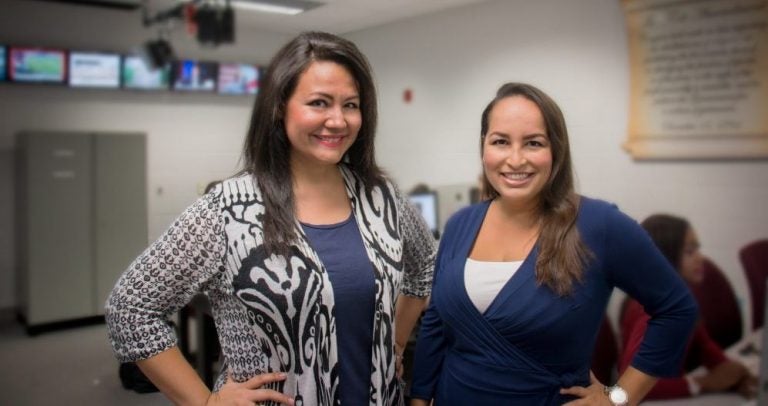UCF is one of a handful of universities nationwide offering students a communications program that teaches how to deliver news to both English- and Spanish-speaking audiences.
It’s not as simple as translating the news, administrators say. To be effective, students need to know how to reach native and bilingual audiences. That’s what led UCF’s Nicholson School of Communication to launch the Hispanic Media Initiative, which lead to Knightly Latino, a weekly webcast that provides news in Spanish that is relevant and of interest to UCF students.
The program began as a volunteer effort, which grew into a practicum and then a class. It’s part of a wider initiative to meet the needs of the growing Hispanic/Latino student population at UCF and respond to an industry need for bilingual professionals in the field. The program also provides all Nicholson students an opportunity to learn about how to work with different cultures.
Katie Coronado, a UCF aluma, is at the forefront of the new program. Coronado has an extensive background working in Spanish and English media. She worked for Telemundo and NBC television affiliates before joining UCF in 2012. The program is not just a personal project. It’s about giving UCF students – both Spanish-speaking and non-Spanish speaking – an advantage over others entering the media industry.
While newspapers are shrinking and the broadcast news telecasts fight over ratings, the two major U.S. Spanish media networks, Univision and Telemundo, have been taking bigger pieces of the rating pie. And the viewers are growing into a powerful consumer group.
According to the Selig Center for Economic Growth, in 2015 Hispanics controlled $1.3 trillion in buying power, an amount larger than the gross domestic product of some countries. The increase is more than twice the 76 percent growth in non-Hispanic buying power during the same period. The center’s projections show U.S. Hispanic buying power reaching $1.7 trillion by 2020.
Even Nielsen’s has taken notice. This past summer it issued a report on the importance of the Hispanic viewer. And the population of Hispanics, now at about 57 million or 18 percent of the U.S. population, is expected to more than double (to more than 119 million) by 2060, while the rest of the population remains steady or declines.
So it makes sense to offer broadcast students an opportunity to learn about the Hispanic community and its culture, how to report news relevant to these communities, and how news centered on Hispanics impacts the greater community, Coronado said.
Erica Rodriguez Kight joined UCF in 2015 to help with the initiative. She is working with students in Knightly Latino and her research focuses on how the media frames health issues for Hispanic audiences.
Coronado and Kight are working together on a textbook for the Hispanics in Media in the U.S. class, and several other classes are in development as part of the initiative.
Both communicators continue to teach other required broadcasts classes in the school,including the Knightly News capstone class. They are also collaborating with other universities in Spain and Cuba to seek out international opportunities for students.
“Our focus isn’t just about producing content in Spanish,” Coronado said. “It’s also about analyzing the delivery of Spanish news and the effects on its audience.”
The effort is important to teaching all students the power of good journalism.
“Our evolving Hispanic Media Initiative is already an essential part of our broadcasting program for our students,” said Robert Littlefield, director of the Nicholson School of Communication. “I am proud to be associated with these pioneers in our program.”
